cuppa
no matter if you’re uppity
or you cause a brew ha ha,
you’ll always be my cuppa tea,
my steaming mug of char
know this, my darjeeling,
only tea leaves me this way
you stir me up and turn me
fifty shades of earl grey
yes, that’s the oolong
and ooshort of it,
the infusing, confusing thought of it
but please don’t make a sport of it
because without you,
I am defunct
like a biscuit waiting
to be dunked
Brian Bilston
This poem is included with the permission of it’s author who is a very kind & generous chap. He has published several books containing many more poems which can be found at: https://www.panmacmillan.com/authors/brian-bilston/days-like-these/9781035001651 The poem here is from a collection he wrote over the course of a year. One every day, on a wide range of topics, whatever took his fancy at the time. Including the link here is to say “Thanks Brian”. The title of this little beauty took my fancy when I stumbled across it. When I sought permission he said “yes of course” but asked nothing in return.
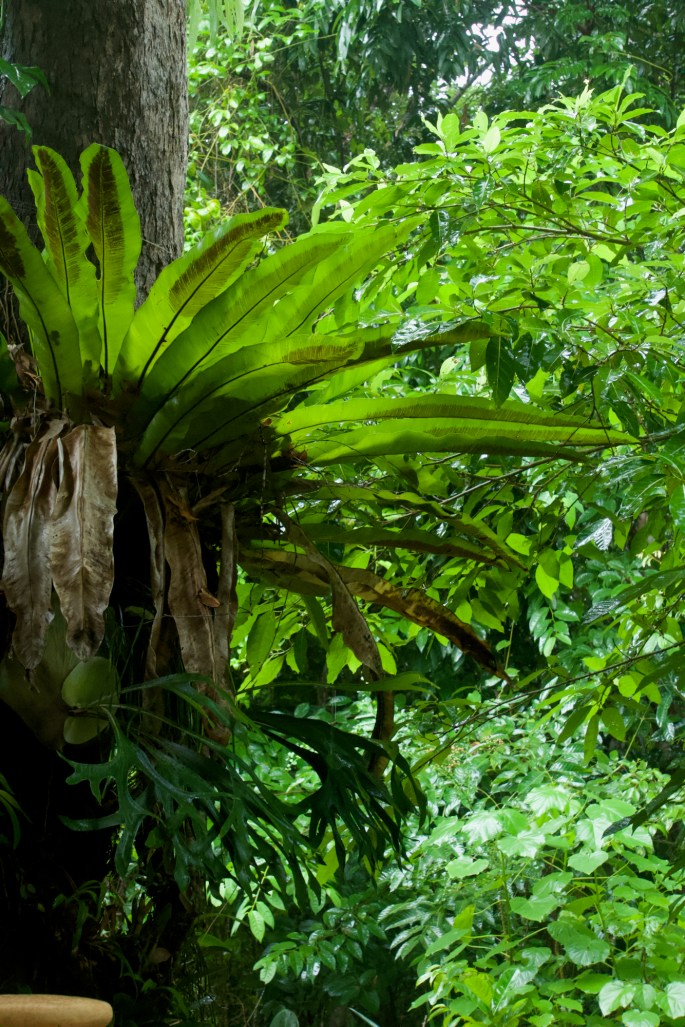



I began this post with both the poem, & the ‘banner’ of what I like to think is a slightly surreal image of my hat drying on the line after it had been treated for humidity induced mould, to say something about our ordinary everyday life in this extraordinary place.
After 5 years in the tropical north, 2 years on the Cape & 10 months living here, what was once different has become normal. We have adapted.

Many people who haven’t spent much time in the tropics think of it first & foremost in terms of comfort, or more accurately ‘lack of comfort’. Well it’s fair to say that living in a tropical rainforest is probably not something which would appeal to everyone, but then again air conditioned 5 star luxury holds no appeal to us. Whilst the wilderness (& rainforest in particular) lacks convenience, comforts & pampering, it instead provides freedom, lack of structure, & raw nature experiences (& in our current situation comfort too). Either, or anything in between are valid choices but all have their costs.


Here the ‘costs’ are heat, humidity, bities, & the need to be largely self reliant. This is what we have adapted to, & what now feels normal. Some may read this & think “not possible” but the reality is it is very possible. People do live up here! What makes it very possible is mindset, preparedness & time.
I intended to begin with a list of the ‘hardships’ we ‘endure’ to be here, but thought it might sound like I was whinging or boasting, hence the few introductory paragraphs above. Really the list which follows is just the background story.
Heat – Yep it’s hot, but mostly it’s consistent. A top in the low to mid 30’s year round. Night time lows have maxed out at 27 & got down to 22 on occasions. Much easier than big swings in temperature. Easier to dress for. (or not). We have no air con, just fans which are sufficient. Being up on a hill & surrounded by the forest means we haven’t experienced the sort of ‘blast furnace’ temperatures we have experienced elsewhere.
Humidity – It’s varied between around 60% to 100% which is not as bad as it sounds. Doing anything physical sees our clothing soaked very quickly, & occasionally we are wet without activity, but none of the cloying ‘difficult to breathe ’ humidity which we used to describe as being ‘close’ when growing up in England. Heat & humidity combined are the worst, but generally the highest humidity is in the early mornings when the temperature averages 24 deg.C. Standing out in the forest one morning trying to get a photo of a Yellow-billed Kingfisher involved just standing around for 45 minutes or so watching it’s nest until it returned. The dewpoint must have been low that morning as almost every part of my body felt like it had become a tap. That was unusual though, but worth it to finally photograph what had been an elusive bird.
Rain probably shouldn’t be in this list, because up here in the warmth it is something to look forward to & to enjoy. Wet without cold is very different to wet & cold. It refreshes everything, including us, & both the cloud which brings it & the rain itself cools everything down. The forest responds by looking happier. The downsides are that it often knocks out the internet & prevents me taking my camera out.
Bities They are here in abundance, but mostly rarely seen or happy to leave us alone if we leave them alone.
The exceptions to that are the Mozzies & Forest Sandflies. Different in the wet than they are in the dry. In the dry the Mozzies seem happy to stick to their dawn & dusk routine, but once the rains came they seemed to lose their respect for time. They haven’t been out in huge numbers, but stand still & within a short time there will be half a dozen whining around your head. The tiny black Forest Sandflies which during the dry are little more than a crawling irritant, in the wet develop an appetite, or so it seems, the reaction to their bites although nothing like the mini Mt Vesuvius-like swellings the NW Kimberley sandflies inflicted on us (until we developed a degree of physical tolerance) are itchy. MrsTea likes a foul smelling (to me) non DEET proprietary concoction sold under the brand of ’The Locals’ to keep them away. I prefer relaxing inside away from the little blighters. We both use DEET on occasions though. ‘Itchy bites’ are a regular thing, but not overwhelmingly so.
The real bastards are the sneaky little ‘Chiggers’. Forest mites. Scrub itch. I’ve had three doses now, & MrsTea one. How they know when it’s 4am I have no idea, but if intolerable itching around one’s ’softer parts’ makes it’s presence known at around 4am – it’s the bloody chiggers. Brushing through undergrowth in the forest is a gamble. Most times no chiggers. A few days of frequent hot showers & applying Scabies cream fixes’em up though.
Green Ants – they are everywhere, but only a problem when we inadvertently invade their space which they defend. They have a nasty little nip. Worst is when they find themselves trapped in our territory – inside our clothing – & can’t get out. Then the nips can come thick & fast. Thankfully it is only nips & no lasting effects. Again we have learned to take care what we brush against & where we sit down. They still get us occasionally, but mostly it’s a case of laughing at the affected person’s amusingly frantic de-robing to be rid of them.
Hornets & Wasps. Often large, brightly coloured ….. & intimidating as a result. We are told they can give a painful sting, & that wasps can gang up on you in large numbers. Thankfully though they are generally happy to ignore us. When wasps built a nest in the low branches of a tree close to the house we were concerned they might think we were a danger to their nest, so we kept our distance & they were ok with that. The bright orange Hornet whom we watched building a mud nest in our kitchen & then bringing paralysed caterpillars to put inside, before laying it’s eggs & sealing it all up took no notice of us at all. We’ve left the nest to see if the young, strong & fit from eating the live caterpillars, will emerge by themselves, or whether the parent will return to let them out.
Snakes – They are around & we see some of them regularly, some near the house, but mostly further afield. Pythons, Northern tree snakes, Keelbacks & Slaty Greys are all non venomous. The Brown tree snake is ‘mildly venomous, the Brown-headed snake is ‘venomous’ & can (according to our snake guide) be quite aggressive if not shown respect, whilst the Coastal Taipan is considered to be one of the worlds most ‘dangerously venomous’ snakes. All are here, but only one sighting of a Taipan so far, by visitors, not us. It was out on one of the property’s walking tracks, a big healthy specimen, over 2 metres long & with a large girth. As is usual though it preferred to leave than to engage in any unpleasantness when given the opportunity. Taipans can be lightning fast & stories abound about folk trying to shoo them away with brooms or shovels, only to have them come straight up the handle to bite their assailant! Not sure if that is true, but like with any venomous snake showing them respect & keeping your distance is the best strategy. The most concerning snake in these parts is the Northern Death Adder. These are also considered to be dangerously venomous, but it’s their behaviour which increases the risk. They hide in leaf litter & unlike other snakes tend not to move away when approached. The chances of seeing one until you unknowingly tread on it are low, although one of our visitors did see one out in the open on the side of a road through the forest. Easy to identify by their unusual shape. Thick body with a short thin tail. Would be good to see one, but not close enough to upset it. A new term has entered our vocabulary. Herping – the reptile equivalent of bird watching.

Spiders – Some of the large Orb Weavers like to build their large webs across tracks or doorways, & walking into them unseen an occasional occurrence. The web fibre is quite strong & the sight, out the corner of your eye, of a one of these large beasties on the side of your head whilst scrabbling to disentangle yourself is a tad disconcerting, but of no consequence once the momentary panic subsides. Each time you think to yourself “I’ll keep a better lookout in future” but the incidence is infrequent enough to forget, so we live with occasional surprises. Despite this, our contact with arachnologists & watching them handle spiders of all sorts here has taught us that we needn’t worry, not that we did, but now we are probably a little more confident, as well as amazed at the variety.

Scorpions – these come in a variety of sizes & with differing strengths of venom. Rarely seen unless specifically looking for them. Easiest at night as all scorpions glow white under UV light.
Millipedes & Centipedes – they are here, but also rarely seen. They have been known to cross our smooth concrete living area floor, so wearing footwear if walking around in the dark is wise. Some can give a bite requiring opiate pain relief. Biggest we’ve seen was close to 6 inches long (150mm) , pink & the thickness of a finger.
Crocodiles – We have seen a small one in the community’s sewage ponds & know of a couple of larger ones in a local dam. Occasionally notices go up on the community notice board at the Lockhart general store warning folk about sightings in various creeks & waterways, some quite small where were it not for the notices we may have assumed were ‘safe’ .

The Self Reliance bit is important too. It’s a significant factor in differentiating between ‘curated experience’ & ‘adventure’. I remember well the sense of huge adventure I felt as a young boy taking a public bus service, alone for the first time from my hometown in England to a swimming pool in the ‘County Town’ of Chelmsford some 30 miles away. The many subsequent repeat trips never felt quite so adventurous as familiarity replaced the unknown, but I never stopped enjoying the sense of freedom that being responsible for myself gave me. It’s not hard to draw parallels to that of being here on the Cape & in the rainforest.



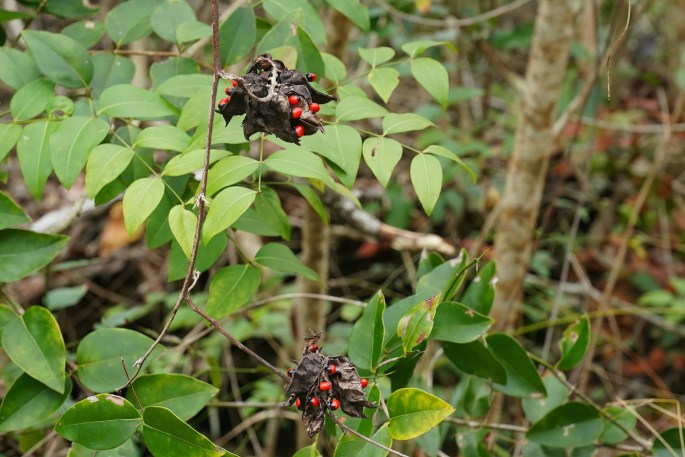

The ratio of time alone vs time with visitors has remained much the same. More alone than with company which suits us. It gives us a chance to look forward to the visits & to returning to our solitude. A good balance.
Since I last wrote we have had botanists (back for a second time) who were hoping to document the ripening of a rare caper. They believed the fruit would turn bright orange. It had been caged at it’s location out in the forest to prevent it from being eaten by animals. Eventually it was discovered that it didn’t go orange at all, instead remaining a brownish green colour. However it did become quite fragrant – none of us could quite agree on what the smell was. I thought a cross between apple & very ripe pear, but with a hint of citrus. It was all duly documented, geo-referenced, photographed & parts of the plant preserved. Of course many specimens of other plant matter had the same treatment. The caper was the drawcard for this visit, but it is rare for most of our visitors to leave without undocumented & sometimes unidentified specimens, such is the nature of this environment. I had never before considered that capers were anything more than disgusting little green things that some folk enjoy eating, bought in jars at the supermarket. This caper was nothing like that, the size of a large avocado. As I held it & smelled it the realisation that I what I had in my hands was something never previously documented by science, a ‘new’ world entity, which made me feel a real sense of privilege & provided a small insight into what, perhaps, drives many ’scientific discoverers’. These are not folk in it for the money or the glory, they are passionate explorers who’s rewards are in giving. Adding bit by bit to human knowledge. We need folk with the interest & the doggedness to do this.


The ‘Venom Crew’ as we came to call them were no different. A group of 8, all with individual specialties, but with a commonality of venom. Snakes, scorpions, Assassin bugs, & more. Most may have grown up as kids who liked bugs, but here was a group of top level scientists putting their lifelong interests to good use – understanding more about what makes up the many different types of venom & finding new medical uses for their discoveries. It’s not uncommon to read about modern medical discoveries & treatments emanating from the sorts of things these folk were doing, but the part of those stories often missing is the passion & enthusiasm of these folk at the front line. They are not white-coated bespectacled folk tied to a laboratory bench talking in strange languages (at least not all the time), they are outdoor adventurers full of fun & vigour, but with the discipline to make use of their enthusiasm.
The ‘Termite team’ who visited together with part of the Lidar team, including the property owner worked together. The Termite team made up of experts from several Australian universities & one from Canada helped the owner & lidar team cut down a number of trees, in part to create a needed firebreak on the property, in part to assess biomass of trees previously scanned & in part to look at the relationship between the impact of termites upon biomass. All important stuff in a world where carbon credit has been a term bandied around but to date it’s measurement has been pretty rudimentary. The team’s visit here is a tiny piece of the jigsaw which will add to a needed larger picture as we work toward a hopefully sustainable ecological future. They may be focussed upon the detail, but they all still saw that detail in the context of the big picture which one day we’ll all take for granted. As someone who has had limited contact with younger folk in the past couple of decades, I have found our contact with those who have been here to validate my beliefs, despite criticism I often read from folk my age & older of todays youngsters, that if anyone is going to be able to bring our planet back from the brink that we humans have imposed, it will be these upcoming generations. Todays ‘radicals’ have a lot more than just words & slogans behind them. Not news to me, but to see it in action via the tiny window that being here provides, helps to balance the oft read negativity I read on online forums populated by angry conservative old men.
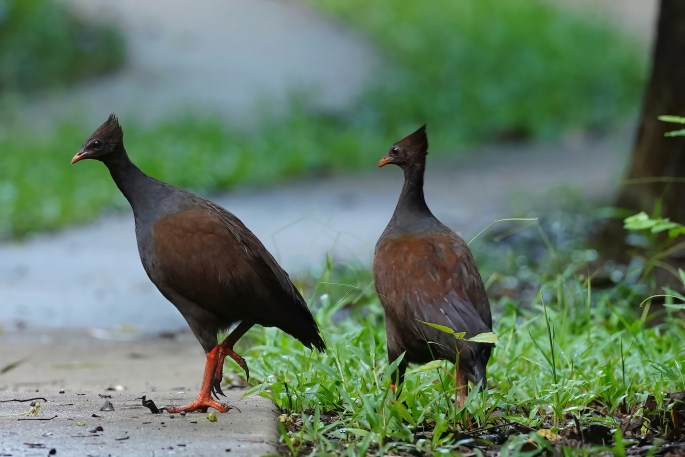


The Spider folk were welcome returnees, this time Greg had a different ‘offsider’. Who would have thought that I might have a shared history with an arachnologist ? Helen, an ex pom like us, also an ex motorcyclist like me, who like me had been a very active part of the motorcycle rally scene back in ‘Blighty’. We even each had old threadbare rally T shirts here. Who’da thunk?
And the bird recordists. Part of a larger ‘Endangered Species’ project. Ian & Ted are working together on an electronic recording tool which can be left out in the bush for long periods listening for the specific calls of the Coxen’s Fig Parrots in SE. Queensland. These are one of 3 subspecies of Double-eyed Fig parrots in Australia. The problem is that they are so rare that there are no recordings to ‘teach’ the AI (artificial intelligence) technology what to listen out for, so Ian & Ted were recording the Marshalls Fig Parrots here (& the Macleays Fig Parrots down in the Daintree) in the hope that there might be sufficient similarities in their calls to the Coxens to at least make a start. They were quite successful finding an active nest, but have also left a couple of recorders running here for a month or two, for me to service & then send back to them, to obtain more ‘flyover; calls. The technology (& Ted’s expertise) enable them to pick the sounds out of months worth of recordings in a fraction of that time, using a computer screen & ’soundwave recognition’.

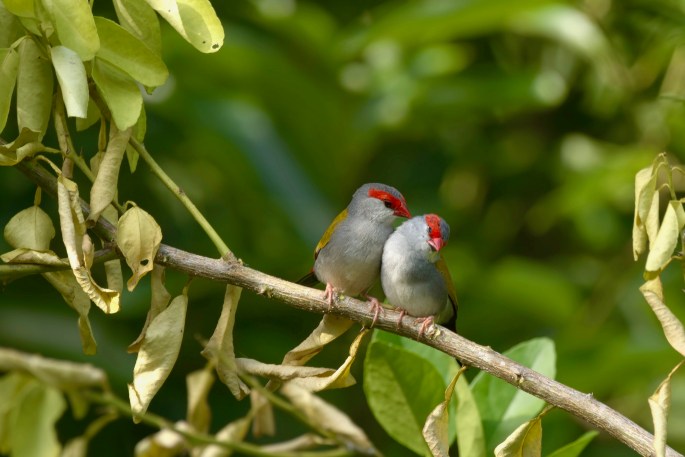

For us the regular chores have continued throughout, but nothing which has been onerous, & all able to be fitted in between walks, outings, & lots of relaxation. The grass which had virtually not existed prior to the damage from severe tropical cyclone ‘Trevor’ which hit here in March 2019, & which was expected to die off during the Dry season, has not stopped growing at all. All cut with a battery operated whipper snipper which is surprisingly effective. The grass cutting round generally takes 3 or 4 days, a bit longer with humidity increase, & I expect I’ve managed half a dozen or so ‘rounds’ to date. It’s the most time consuming task. Other regular tasks have been watering (until the rains came), house cleaning, washing of bedding etc when visitors leave, regular mould & termite inspections, & managing the solar & water bore – which is only keeping an eye on battery & water tank levels & running a small generator as required. A couple of other machines need a regular run as things left in this environment will often deteriorate quickly if not used. As with other places we’ve looked after our presence is the main requirement.

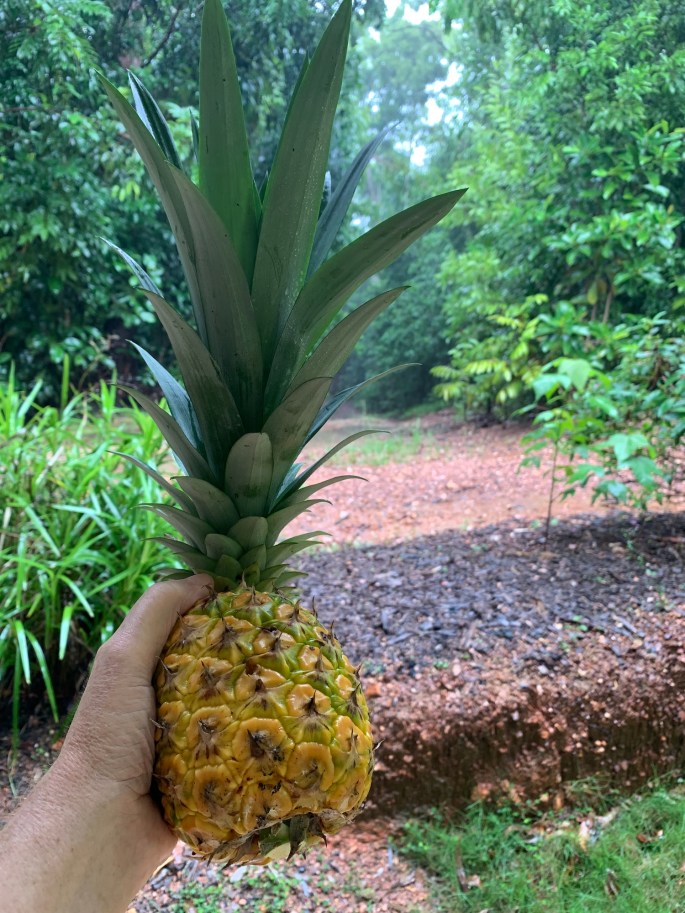



Of course other jobs arise, fallen trees blocking the driveway & tracks need cutting & clearing. Often covered in large quantities of vines & wait a while tendrils. After one smallish tree blocked the driveway stopping us getting out, we made initial attempts to clear it but decided we should wait. It contained 3 large Green Ant nests, & they were not at all happy about their changed circumstances, & willing to take it out on any human foolish enough to get close. Seemed like there were millions of the little blighters swarming around on every branch & leaf. I’m sure if anyone had been observing we would have made for very amusing entertainment! With clothing soaking wet & sticky our increasingly urgent antics to de-robe in an effort to rid ourselves of the attackers would have looked a sight! Waiting until they re-located was a better approach. A few days later they were all gone . We cut the tree up & piled the pieces just off the driveway. Just a couple of nights later we were spotlighting with visitors & found a hoard of large beetles on the now ‘dead’ wood. What it is that the timber gives off which tells the bugs to visit we don’t know – not sure if they were eating it, laying eggs in it or what, but they obviously had an effective way of recognising recently fallen timber. One tiny example of the dynamic environment. Another is growth. It happens so fast. One of the common vines can grow a metre or more per day, they are everywhere. Had to rescue our Tvan from their clutches & the sides of the driveway need regular trimming.
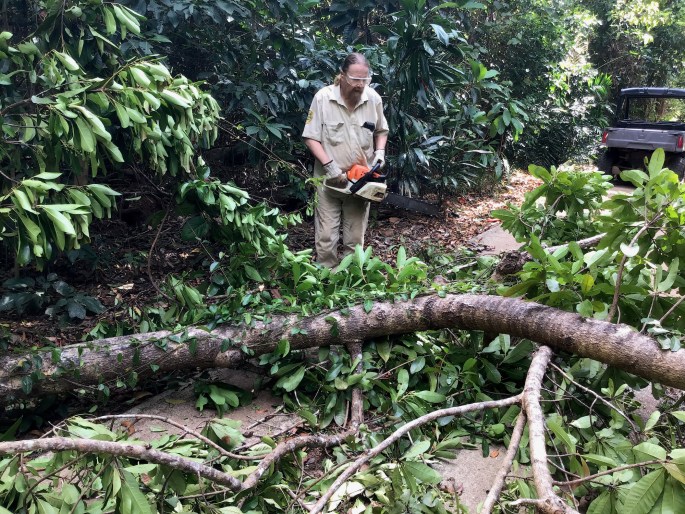
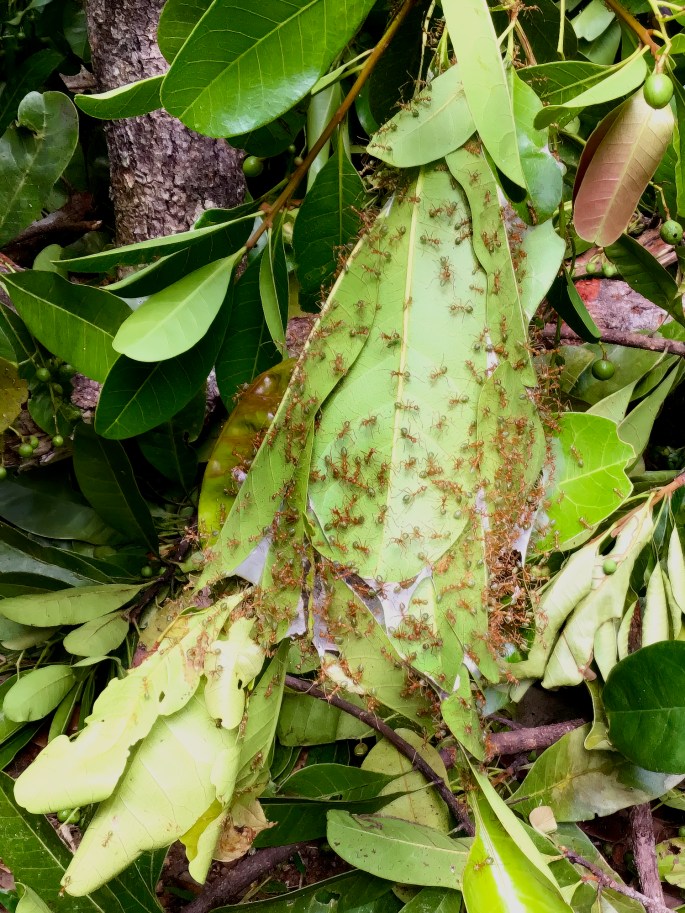
New tyres for the quad bikes & the Polaris 4wd buggy were brought up, some in the owner’s plane when he visited, & some in the vehicles of researchers. Tyre irons were with them. For several hours the two of us heaved sweated & groaned, our clothes so wet we could have just got out of a creek, & we managed to get one old tyre off & almost got it’s replacement on, but spat the dummy & gave up when we broke the valve. Subsequently we took them to the council workshop to be fitted. $55 per tyre, but negotiated to $30 due to them being smaller than car tyres. Car tyres would have been easier though. The smaller ones didn’t fit properly on the hydraulic tyre machine so they still had to be done by hand. Two men with much longer tyre irons than we’d had, AND a means of clamping the tyre down struggled almost as much as we had. We think they must have been glad when all of them were done! Certainly made us feel better about ‘giving in’.
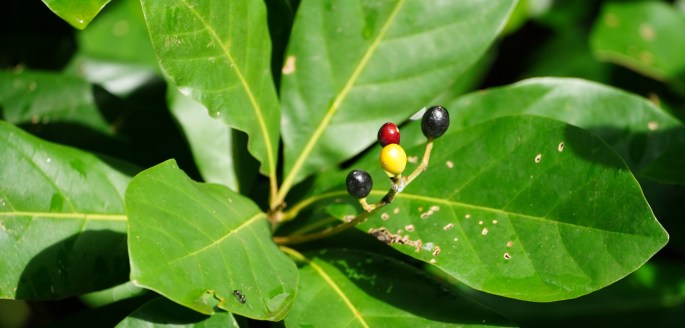

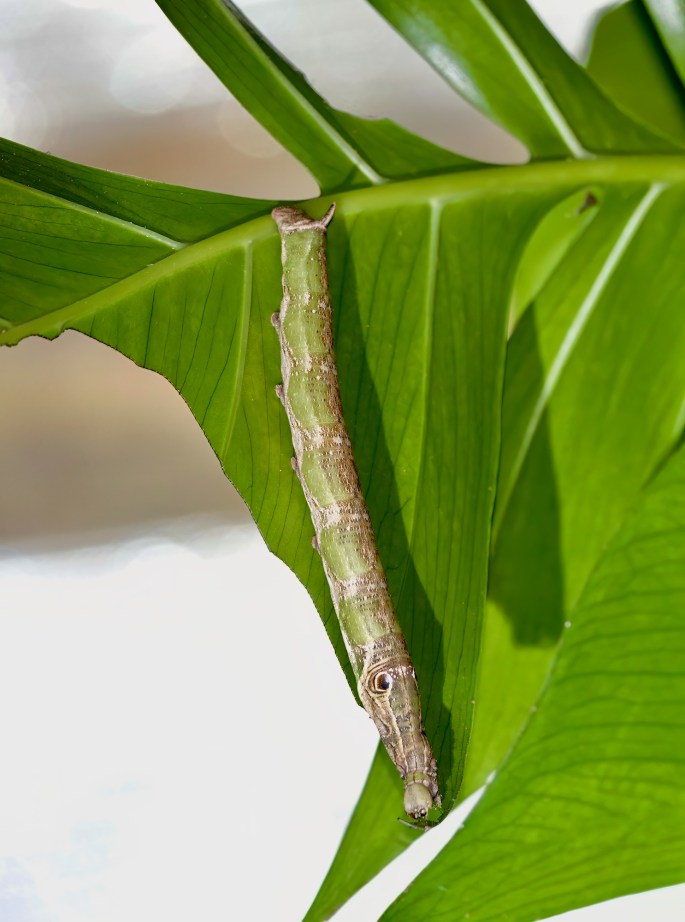
When a tyre on the Toyota was punctured, a gash in the sidewall which had held on for a while having finally let go I had just returned from dropping some visitors off at the airport. I parked in the carport, got out & heard the hissing of escaping air & the tyre went flat as I was looking at it. Lucky it happened here! Cost of a replacement in Cairns is just over $400. To get it sent up here on the Seaswift barge the fitted cost here is $674.50 & could well take several weeks. Being a tyre size not generally used around here there were no second hand ones available. The Toyota is now restricted as to where it can be taken without a spare tyre. No roadside recovery trucks here. Breaking down would be a major drama, worse if we (or visitors) weren’t carrying a satphone. The owner will bring replacements when he next flys up.
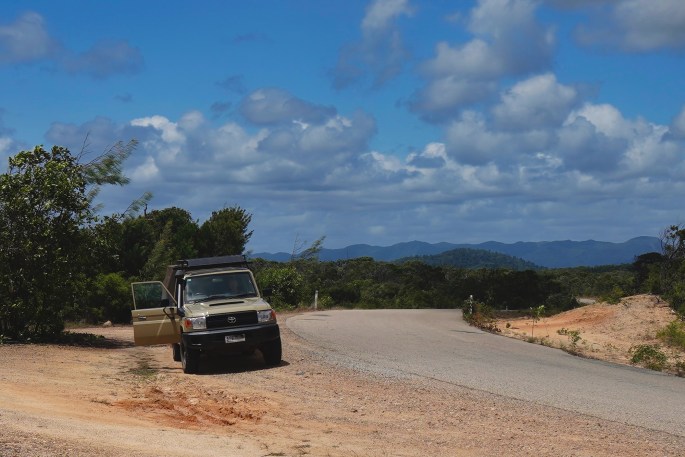
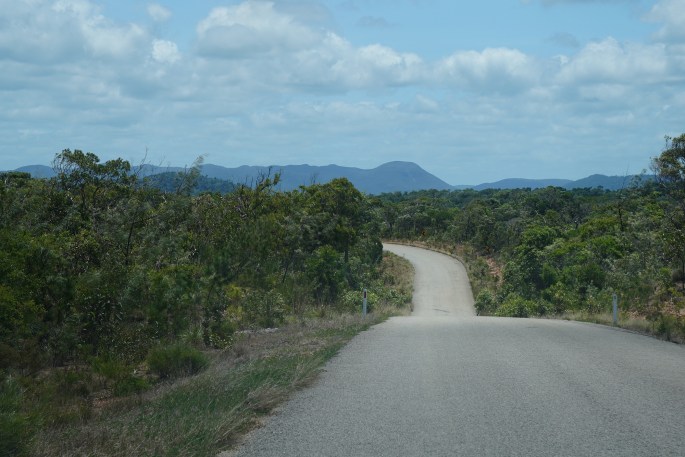

If truck deliveries were possible, we are told that many things would be cheaper than if sent up by barge. During the dry season trucks have no problem getting here, But we are led to believe that the agreement with the barge owners, the Seaswift company is that unless they have a year round monopoly on freight deliveries they will not deliver during the Wet when trucks are unable to get here. Fresh food deliveries are needed weekly. If this is correct we consider it quite wrong that the company can dictate like this. Freight cost on Seaswift, Cairns to Lockhart (Approx 900kms by road) is around $225 for a single tyre! We expect costs in remote areas to be higher but cannot help wondering if they need to be as high as they are.
Had more success repairing a small generator, A little Honda 1Kw one. After dismantling it several times & trying different things which didn’t fix it’s problem, I recommended that we get a new carburettor to the owner, who agreed. I bought it mail order online like most things which are not available here. Fitted it & it ran like new! Hard to comprehend how anything worked up here in the days before a postal service & ebay!
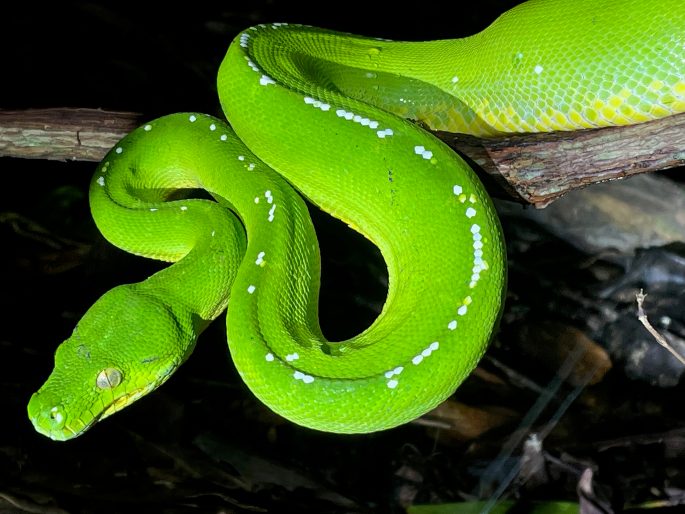
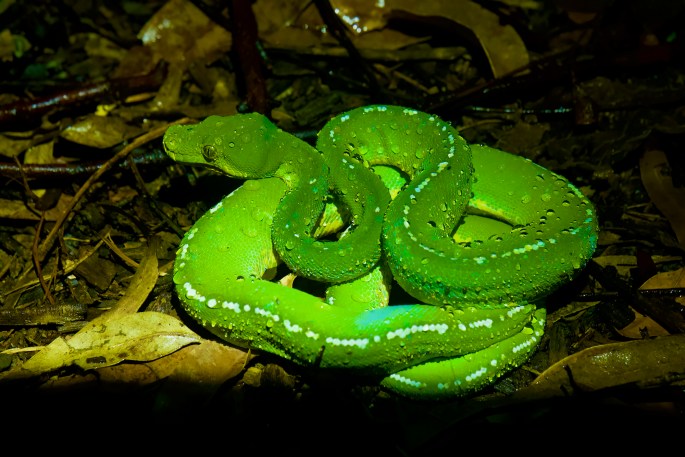
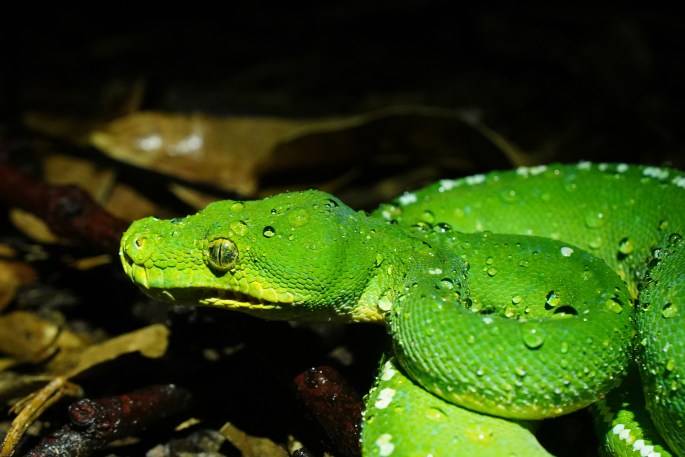

The two fridges here are converted chest freezers. Less convenient than upright fridges with shelving, but use a lot less power from the small solar system. When one died we were able to obtain a replacement through the Lockhart Store within about 3 weeks. Ebay came to the rescue with a suitable thermostat to convert it to a fridge. Some new parts for a toilet which couldn’t be fixed are due any day now. These things ordered online come on the mail plane. Just the bigger stuff comes on the barge.

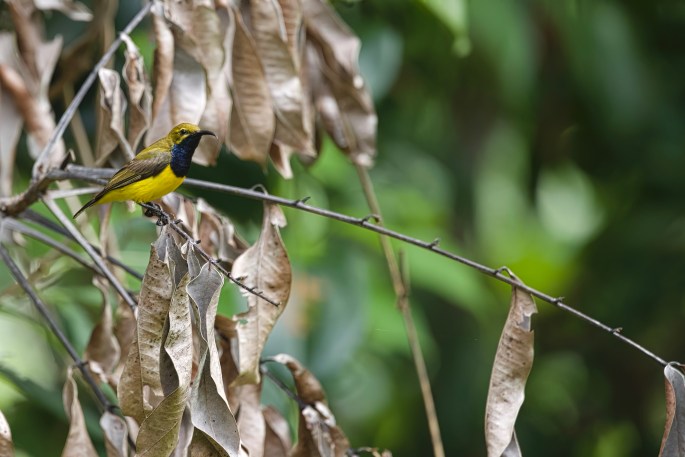

In late November we got our first rains. Not from the monsoon trough, but an easterly storm. It was intense & within a very short space of time the entire outdoor kitchen area was under several inches of water & threatening to find it’s way into the indoor kitchen area. This wasn’t supposed to happen, it’s all under cover. The problem was that the stormwater drainage system from the roofs to which a gully trap at the outside kitchen sink is connected, was overflowing – a lot. We couldn’t do much at the time except to find things – quickly- to divert the flood to prevent it getting inside, which we achieved.
It was obvious there was a blockage in the storm water system underground somewhere. No plumbers on call with unblocking equipment, just us. It seemed to me the most likely place for a blockage might be at the end of the pipes where storm water exits & runs into the forest. Maybe a dead animal or something like that. But where was this exit. From a distance the owners tried to direct us to where it was. After hours of raking , digging & generally getting ‘hooked up’ in the forest we had found nothing. Eventually an old photo from when the place was being built came to light & we realised we had been looking in the wrong place. Even so it took another couple of days digging to eventually trace the pipe exit. Digging holes being no easy task in the very gravelly soil. Once we had found a pipe a number of further holes were dug trying to follow the pipe, eventually leading to it’s exit. The exit when discovered, was underneath a large Wait a while, which had obviously grown up in the years since the drain was installed. The small concrete ‘culvert’ from which the pipes emerged was completely hidden under soil below the wait a while. Lots of care & a chain saw got rid of all the barbed tendrils, with surprisingly minimal injury to us. The soil in the culvert had to be removed a bit at a time, there were so many roots in it, it was like a giant rootbound plant pot & very heavy. Once finally cleared we tried running water into the stormwater system from back up the hill & lo & behold it worked!
I so wish we had videoed the result, I feel sure it would have gone viral across social media. We were laughing ourselves silly. From the end of the drain slowly but surely emerged what could only be described as a giant poo! 90mm in diameter & what turned out to be almost 800mm long. Perhaps without the visuals it’s not quite the same! All we have is the photo below just after it began. 30 minutes or so later it finally finished with a sudden gush of water following it’s almost painful exit. Unlike poo, it wasn’t smelly………thankfully. It was funny though!!.

Also in November The ‘Venom crew’ had arrived on a Friday evening. On the Saturday evening we all went to the official opening of the Lockhart Social club …. except for one of the researchers who had begun to feel a bit under the weather as the day had gone on. It was a great night.
By Saturday morning he was feeling worse. We gave him a RAT test we had obtained from the clinic for ourselves some time back & which hadn’t been needed. He tested positive for Covid. He used a mask, & isolated as best he could, looking quite unwell for several days. By the time they left he was reporting feeling quite a lot better, although his energy levels could still plummet with little warning.
On the Monday we both got ourselves tested at the clinic in order to get our 2nd Covid Booster shots – tests were negative & we each got the shot. Later we realised that we had already had our 2nd boosters, so this was our 3rd (5th shot in total).
We isolated as best we could, treating the rest of the group as potentially infectious given they had all been travelling in close quarters to each other. After the first few days of their time here when we had been enjoying each others company we effectively became two ‘camps’, with us keeping our distance as best we could. It felt a bit awkward & uncomfortable for all but everyone was understanding & accepting.
On Wednesday MrsTea began to feel quite unwell & we obtained more RAT tests from Lockhart Clinic. This time she tested strongly positive (ie. test showed positive within a few seconds). The clinic was informed & they asked us to return, where she was seen by an RFDS doctor in full PPE, isolated from the rest of the clinic – outside at the rear of the building. She was given anti-viral medication (on the basis of both being remote & having an auto-immune condition).
The venom crew departed early on the Friday. No others had become sick.
We believe Covid was transmitted on the Saturday before the chap started to feel unwell. MrsTea had sat very close to him, their heads almost touching whilst he was demonstrating to her the delicate art of ‘milking’ venom from a scorpion.
After two years of keeping well away from covid, having never been anywhere where community transmission had occurred, it finally caught up with us in the rainforest! A week later I tested positive too. It was a pretty unpleasant experience. MrsTea took antivirals & then experienced a ‘rebound’ a few days after finishing them – like getting it twice. I didn’t initially get it as bad , but it went on for much longer, with symptoms which had gone coming back with even minimal exercise. Both of us experienced undue fatigue, but for me it went on for many weeks to the extent I considered I was suffering the oft mentioned ‘Long Covid’, but by around the 7th week I finally came good.
During this time, when we were both thinking we were better, on Christmas Eve, we went for a walk around what we call the Ridge track. Normally an hour or so’s walk, including some longish & steep climbs & descents. It was whilst on this walk we all but bumped into an adult Cassowary. Not sure whether it or we were the most startled. At first I thought it’s dark colour was the rear of a feral pig, but as soon as it moved it’s shape became obvious. It took off into the dense undergrowth immediately. The owners tell us it is only the 2nd sighting of an adult on the property since they acquired it in 2015! I had heard one here, although some distance away from this spot, weeks earlier. We were feeling quite chuffed as we walked on. At around the 3/4 mark the covid fatigue hit us both like a brick wall. We hadn’t expected this. It was so overwhelming we both really thought we may not be able to make it back to the house, despite it being all downhill from where we were. Eventually we made it back with the aid multiple rest stops & mutual support, more resting time than walking time. Quite scary. I cannot recall having ever experienced anything quite like it. It was like suddenly being disconnected from our power source.
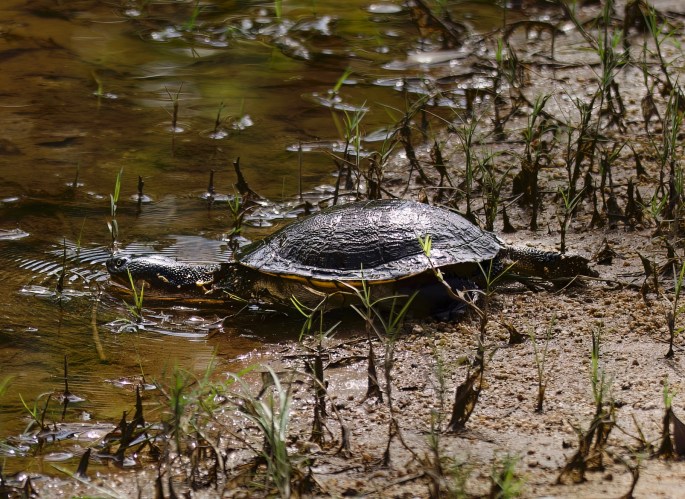
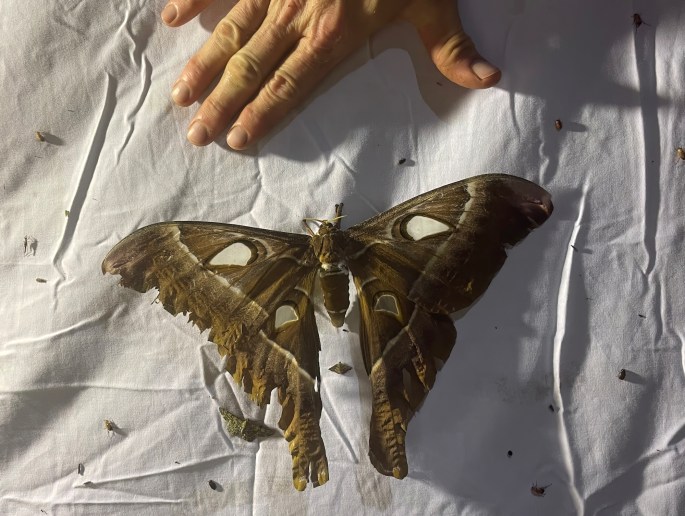
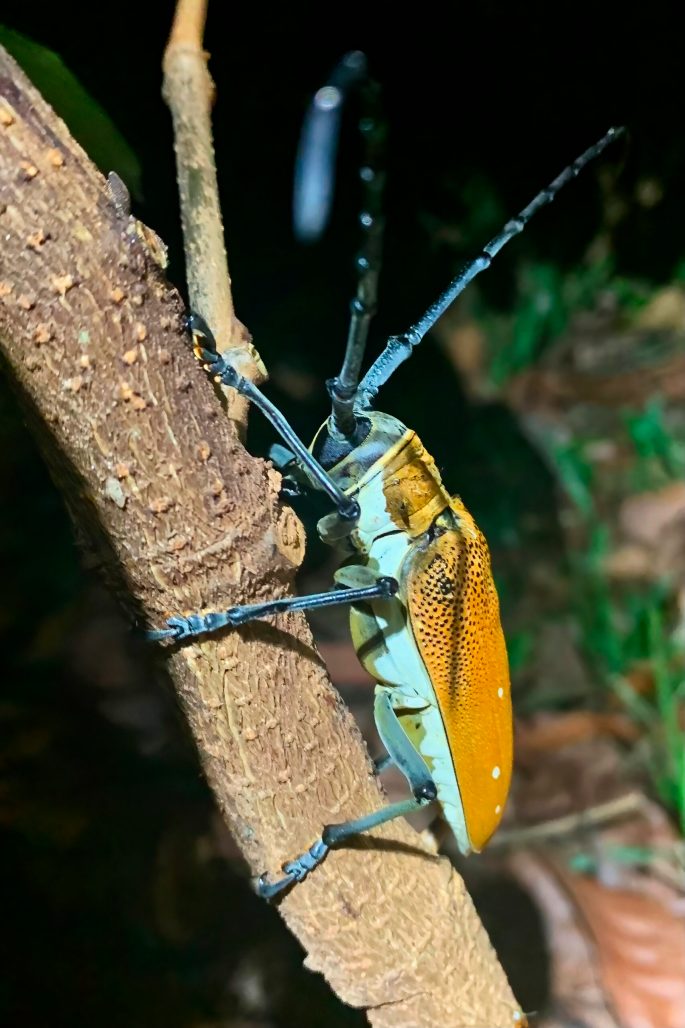


Somewhere between feeling crap & realising I was better, I had another sudden & unexpected health crisis. Some readers may recall that 3 years ago, whilst in the Daintree I was diagnosed with Crohns Disease, but have had it controlled since then with daily medication. The provisional diagnosis had been made several years earlier, but I had never had any significant symptoms until then. Leading up to the confirmed diagnosis was an acute 3 week period where I lost all control of my bowels. To describe it as horrific is no exaggeration. Well here in this remote area with very limited health resources I was in crisis again, & no doubting it was Crohns related but almost the opposite of the crisis 3 years ago.
It began with gut pains which worsened gradually over a 12 hour period. Hard to explain, I didn’t feel constipated, but somehow I ‘knew’ that there was a blockage in my gut. At one point I was seriously considering the possibility I may not make it through the night. Strangely once I thought that was how it was I found myself feeling quite accepting of the situation, not that I wanted to die, just not scared about it. I hope when the time really does come that I’ll be able to handle it like that! I’m not sure how rational I was at the time, but at around the 12 hour mark I was feeling hot & cold, sweaty and a little nauseous, and the most sensible thing I thought I could do was to ‘listen to my body’. My sense that something in my gut was blocked & I was feeling nauseous, suggested just one thing. Pressure was building & if it couldn’t get out one way, there was only one other way it could go….up!
I stuck my fingers down my throat & threw up. It was like I had taught my body the way, no more fingers required, over & over, for more than a couple of hours. Incredibly draining – (literally & energy-wise), but with each time I was feeling a degree of relief, so it felt like it was the right thing to be doing (even though I no longer had any control over it). When there was no more to come I laid down to sleep, still wondering if I’d see the morning. Incredibly morning arrived & I woke feeling fine.
MrsTea had been doing some googling & discovered something which fitted the situation perfectly. Very sweet foods can bring on acute bowel inflammation in Crohns sufferers. Who’d have thought. In the lead up to Christmas she had made us a treat known as Scottish Tablet. A kind of melt in the mouth very yummy & moorish ultra sweet type of hard fudge, made with heaps of sugar, sweetened condensed milk & butter, & over the preceding few days I had consumed enough to obviously not be good for me. At least that was the best theory we had the following day, & I’ve been fine since. No more Sottish Tablet for me Ye ken. Och Aye the noo.
The incident caused a bit of a review about the wisdom of taking ourselves to remote places, but we don’t plan to change doing what we love just yet.
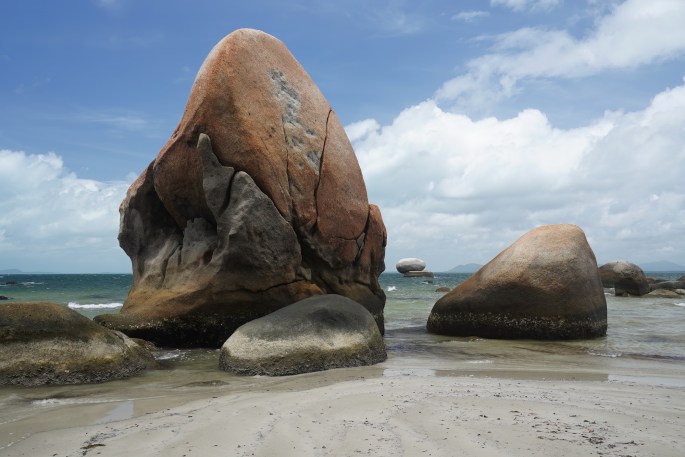
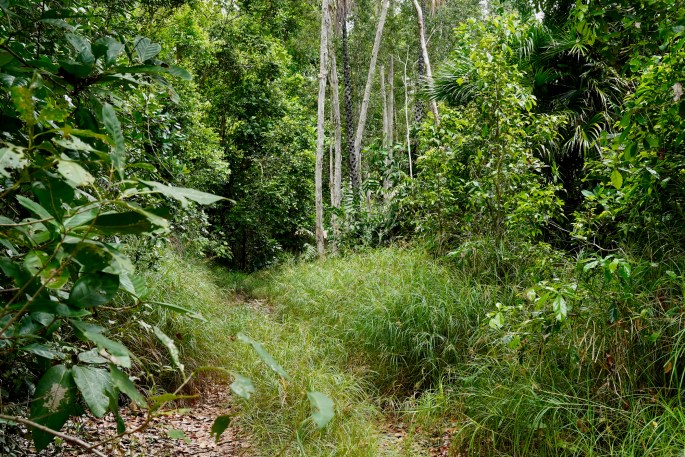




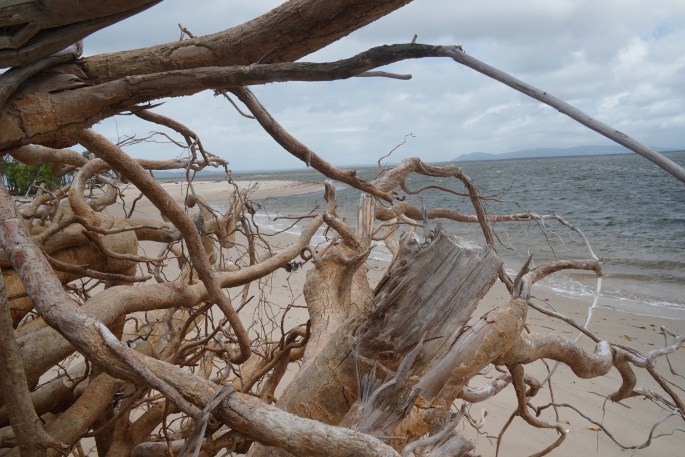

Christmas was another low key but inventive occasion with thanks to MrsTea who always finds some way of making do in the absence being able to obtain the any of the usual Christmas trimmings. Check out the video below. 🙂
It was either just after Christmas, or possibly just before, when we saw an unusual bird on the forest floor, close to the house, one we we had never seen before. Quite a rare thing to see anywhere it turned out. It as a very young Orange footed scrub fowl. They are referred to as precocious, as they are completely self sufficient once out of the egg. No parenting whatsoever. Trawling the net only turned up one photo, enough to confirm what we had seen. Sadly I got no photo of it myself to double the online information.
By January the first visit from the monsoon trough was here. I think we had two days without rain in the month. Compared to the flooding in other parts of the country, even other parts of the Cape we haven’t been too wet. 635mm for the month with the heaviest fall being 100mm in around two hours. The forest rejoiced. Mornings changed. There was a clearness amongst the trees, like all had been washed clean. The dawn chorus became louder & more enthusiastic, & more varied. We began to hear the Black-eared Catbird’s wailings for the first time (although still haven’t been able to see one of these notoriously shy birds). The rain is like an alarm call for the jungle & all it’s inhabitants. Time to wake up! No surprise there really, but it’s great to experience it. So a relatively early start to the wet up here this year, the earliest for 9 years we’re told. We’ll just have to wait & see how the rest of it pans out.
Whilst we have had a mix of both very heavy & intense rainfall, and lighter day long rain throughout January (and a dry week at the beginning of this month followed by a current visit from the monsoon trough again, bringing so far just light intermittent showers) we have only had one storm.
But boy what a storm it was!
Intense rainfall but with all the trimmings of intense thunder & lightning accompanying it. The very first lightning came out of nowhere and was accompanied instantaneously by the loudest clap of thunder we’ve ever heard. I was lying inside on the bed & almost jumped out of my skin. MrsTea was just outside the French doors. Craaak..KaBOOM & there she was diving through the door, eyes like saucers, but with a huge grin on her face. The house shook & as we started to laugh it happened again. Somewhere very close in the forest had been struck. The show continued for several hours, moving slowly away from us. We were shrieking & hollering like little kids given free reign in a lolly shop whilst remaining in the dry under the relative safety of the covered verandas Woop Woop! Yee Haa.
With several cyclones occurring in a short space of time, Ellie over in the Kimberley & others off shore both west, east & another possibly brewing in the Gulf at present, the possibility of one occurring here this season is present in our minds. Really there is little we can do to prepare for such an event other than to ensure we keep sufficient food supplies here. Situation normal as far as that is concerned. The possibility does however feel very different to when we were over in the NW Kimberley though. There we wanted a cyclone to come by, we were prepared, & knew we would survive. Very different country. Most trees relatively small compared to here, & more open space. It was disappointing that the only one which threatened ended up passing us 300kms offshore. Here in the forest it’s a very different situation. There are big trees to fall. Stories from 2019 about the caretaker being trapped on the property by the many many fallen trees blocking the only way in & out. Even climbing & walking out was not possible through the huge tangle of trees & vines. Trees fell on the house. No phone, No internet. We think the satphone should work once the storm has passed & we have an emergency beacon if things get bad enough, but crossing fingers seems as good a strategy as any!
Before I finish up, I suppose I should, with my head hung low in shame, confess to some foolishness.
We had been told about a a couple of large & impressive Metallic Starling nests, which I wanted to go out to photograph. For those unfamiliar with these striking red-eyed birds who impress with their huge sky-borne murmurations, they live in mass colonies, Essentially the nest equivalent of huge tower blocks of flats, hanging in trees. I’d seen one before elsewhere but had never photographed one. The directions to the first were not quite accurate & I didn’t find it. The second I knew the exact location, an identifiable road side tree between the second & third Claudie River crossings. I was alone, & I didn’t have the sat phone with me. Can you see where this is leading? The first crossing is approximately 12 kms from Lockhart on a road with virtually no traffic at this time of year on account of it leading to the two major crossings (Pascoe & Wenlock) further on which shut Lockhart off from the rest of the Peninsula for the duration of the wet season.
I crossed the first Claudie crossing without problem, a bit deeper than I’d seen it before but all good. Reaching the second crossing a couple of kilometres further on it looked a bit deeper, but I knew it had a concrete base, so felt completely confident. That confidence drained away very quickly when out in the middle of the crossing I came to an abrupt halt, bogged in drifted soft sand. I kept the motor running, but unable to go backwards or forwards. My confidence wasn’t the only thing which drained. Water was draining into the car & sloshing around my feet,. The river, flowing from right to left was pushed up the outside of my door, about 18 inches above the bottom of the door. Time went very slowly. I wished I had the satphone. I had visions of being stuck & water levels rising & washing the car away downstream. I’m guessing I sat there trying to work out what to do for around 10 minutes. In a moment of hope, foolishness & shame in equal quantities I noticed I was in 4wd High, I’d thought I’d had it in 4wd Low, I’d certainly intended it to be in Low.
I was still in with a chance!
With the lever shifted into low I thought “I’m closer to the bank I came from, & If I go forward I’ll have to cross back again”. Any thought of getting to the nest had gone, I just wanted to get out of that bloody water & back to that beautiful dry ground just metres away!
In reverse, with front diff lock engaged I attempted to go backwards whilst turning the steering from lock to lock. Success wasn’t immediate, more ’slight & gradual’, but I was at least moving, and inch by painful inch I made it back to the bank & out of harms way.
Once fully out of the water I managed a 3 point turn reversing up the steep approach to the water, all the time hearing sloshing water & a strange sound from the rear of the car, which I now think was water draining from the chassis, dropping onto the turning prop shaft & being thrown back up onto the underside of the vehicle.
By the time I was back ‘home’ I was that relieved I almost fell into MrsTea’s comforting & admonishing arms.
The whole cab was completely stripped that afternoon, & the vinyl flooring with it’s stupidly absorbent underfelt was removed & hung up under cover to dry. This took a week. Even at the end of that week the car was still dripping water. I investigated further finding an almost blocked drain hole under the driver side door sill. Poking a blade into it cleared the blockage & a further 8 to 10 litres poured out. Two electric fans running 24/7 inside the cab had done the job of drying it all after the initial mopping out.
Finally when the cab was all tediously replaced & screwed & bolted back together it was another day ot two before I could bring myself to start the car up & take it for a spin, worried about what I might find. Thankfully when I plucked up the courage I found the car none the worse for wear. I just wish I knew how the water got in. The door seals are good, & no holes in the floor. Possibly rear air vents, but only because I was stuck & not moving I think. They are partially blocked with foam & taped up. If that hadn’t been so I suspect the water inside could have got a lot deeper. The inch or so around my feet was quite enough!
And so, here we are on the ‘downward slope’ of our year or so here. It’s anyone’s guess as to when this years Wet will end & the road out becomes passable. We are keen to leave as early as we can, not because we want to get away from here, but because we need to be back home in Victoria as soon as possible. Our first southern winter in 5 years is not something we look forward to, but if plans which we are still keeping close to our chest pan out as we hope, time back home will be a short break & the beginning of a whole heap of new adventures.
Thanks for reading, please feel free to drop us a line via our contact page or to make a comment on the post.
And slightly belated best wishes to you & your loved ones from the both of us for 2023.
Love
Cuppa & MrsTea



